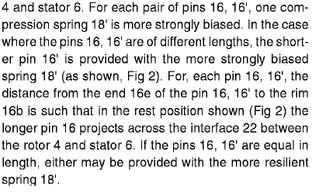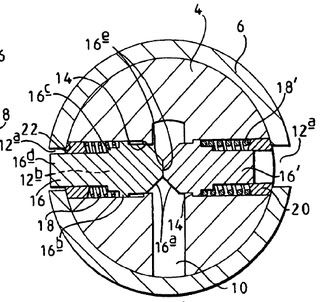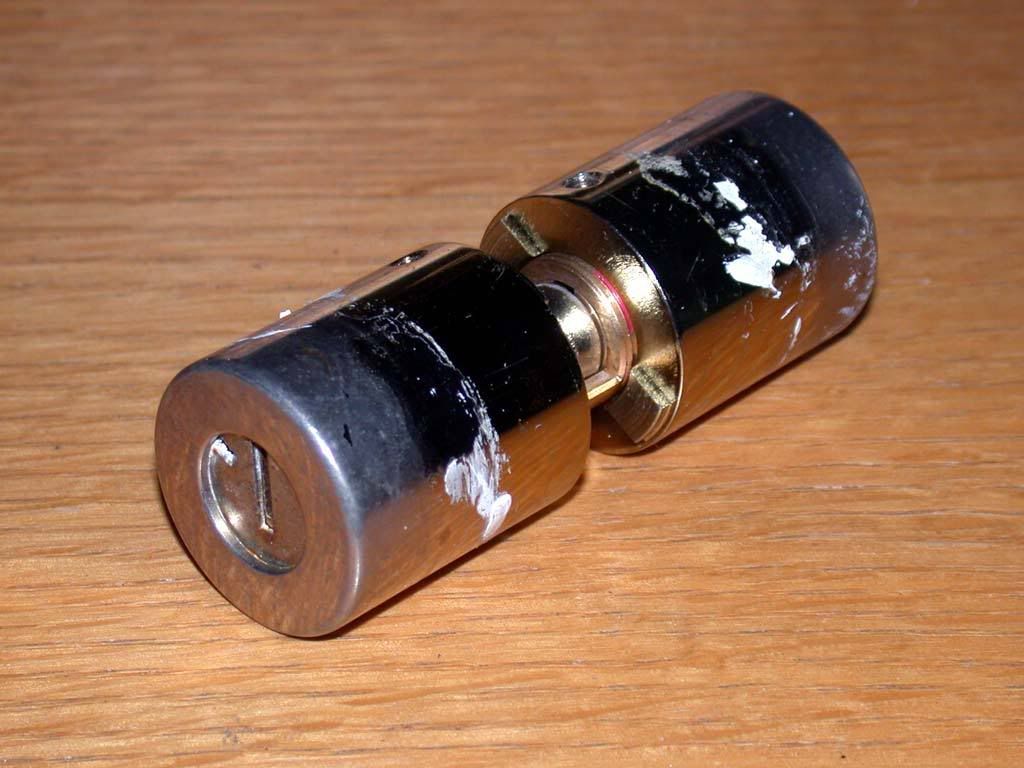
Here it is with the outer shroud removed. You can see the hardened anti drill insert in front of the cylinder. this insert sits in the brass shroud, and is held in place by a small lip at the end of the shroud. It has a punched tab which engages in a notch in the cylinder so it can't spin independantly of the plug.
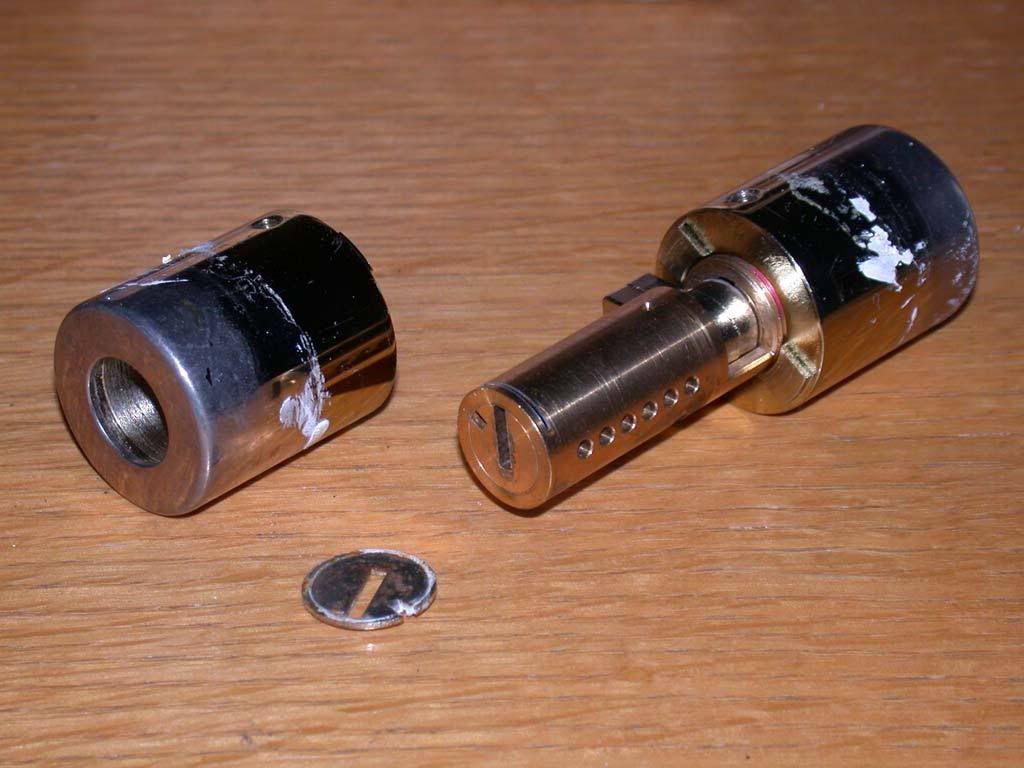
Here's the cylinder with both shrouds removed.
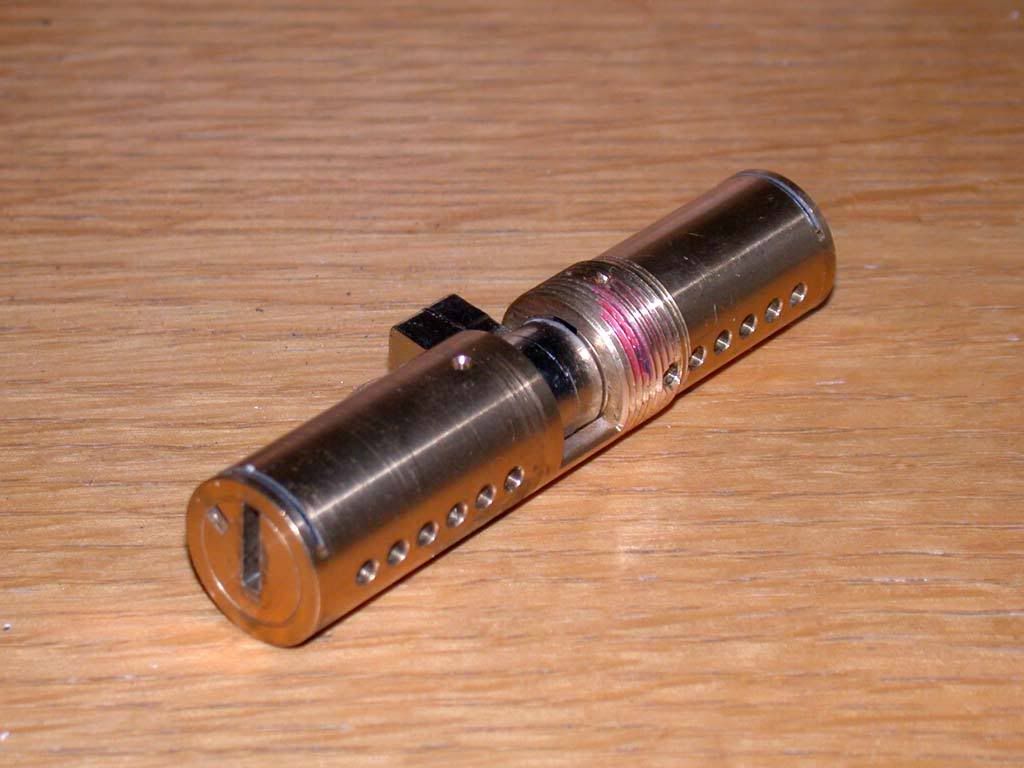
The plug is held in by a small clip at the front of the cylinder. Here the clip is slipped out, and the plug removed.
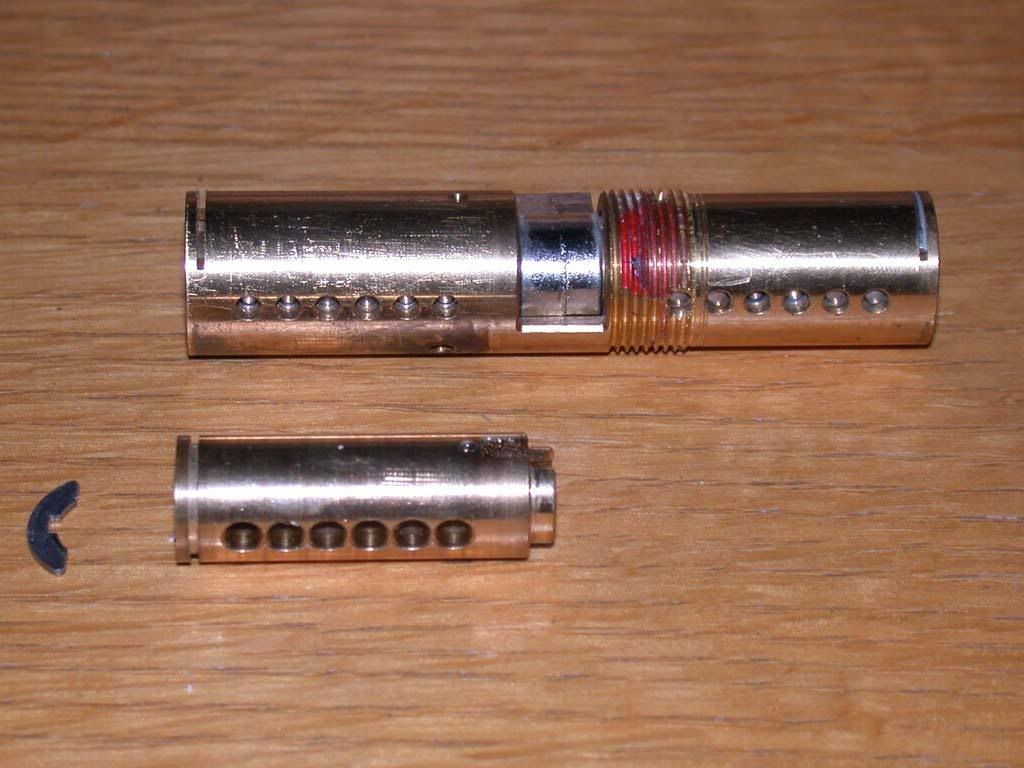
And here's the money shot
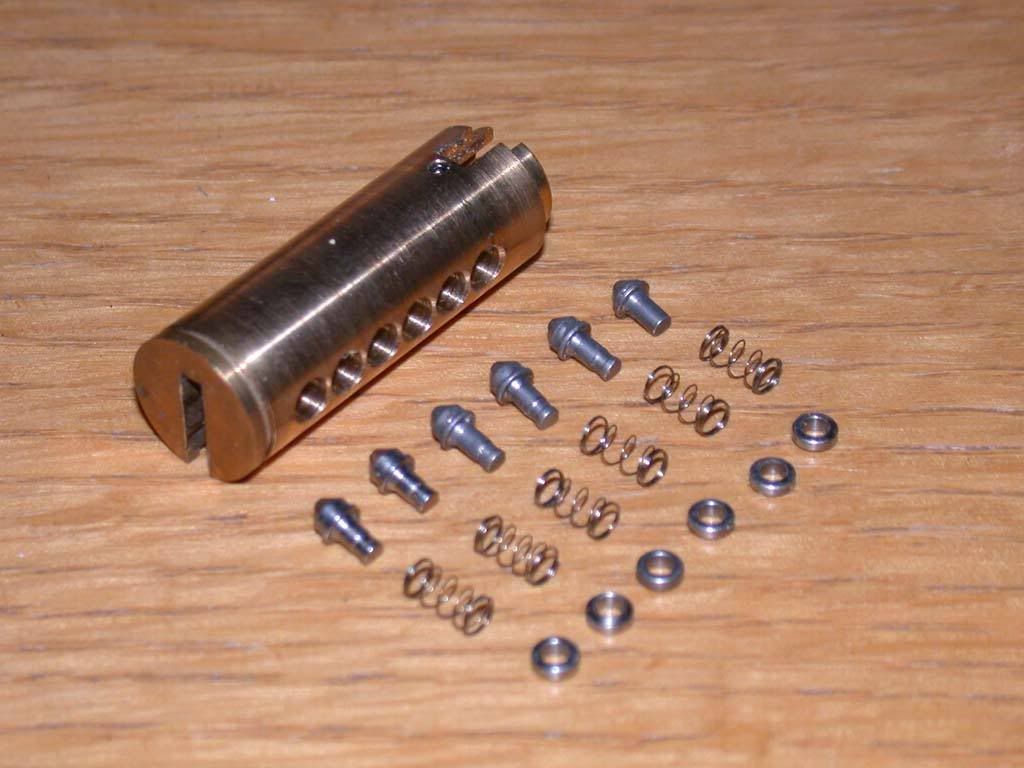
And a closeup.
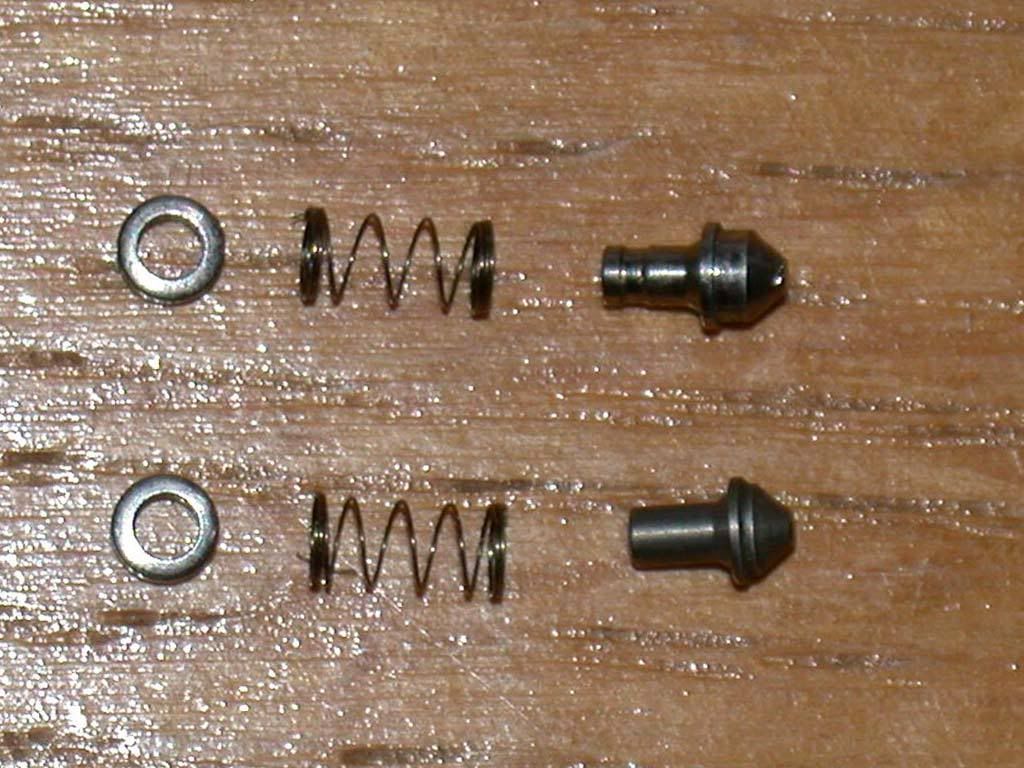
I've not seen a system exactly like this before. Rather than a bottom pin and a spring in the body of the lock, the pin acts against a spring which is held in place by a doughut shaped cap, with both the pin, spring, and cap contained in the plug.
*Yeah, I know - not that new, but as distinct from the 'old' Banham euro profile cylinders.









